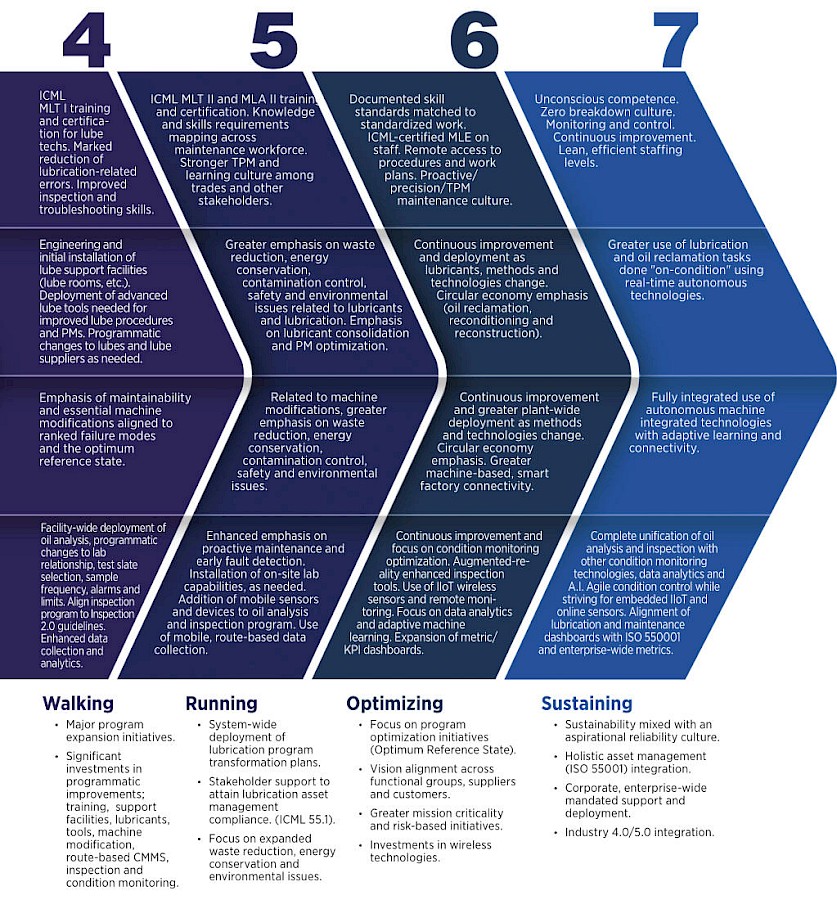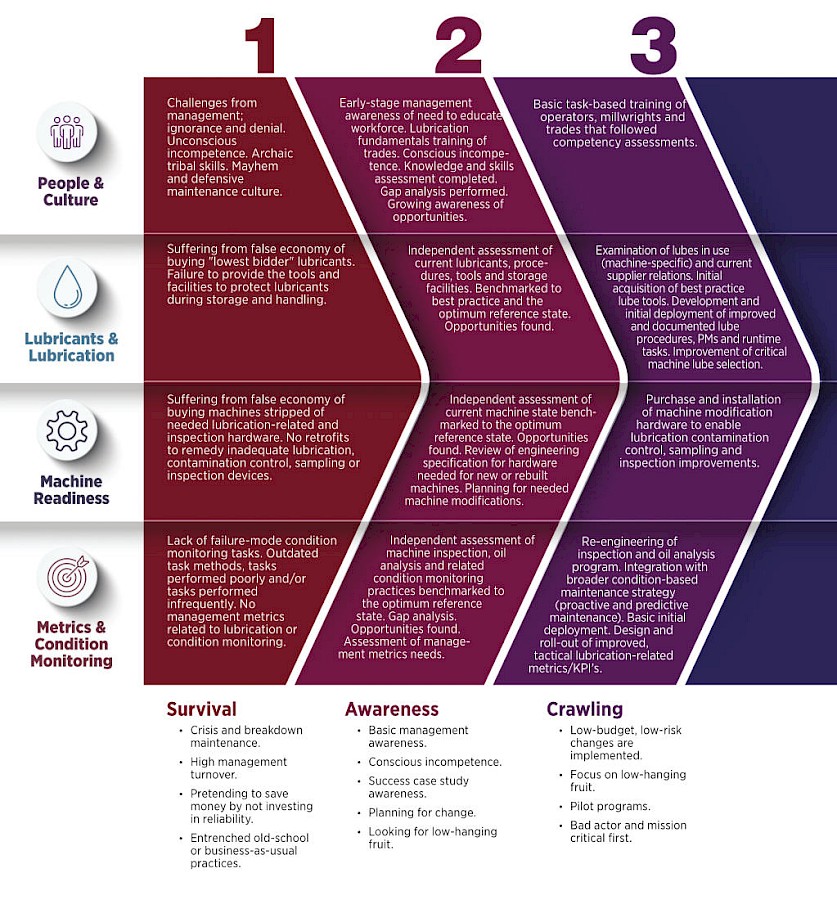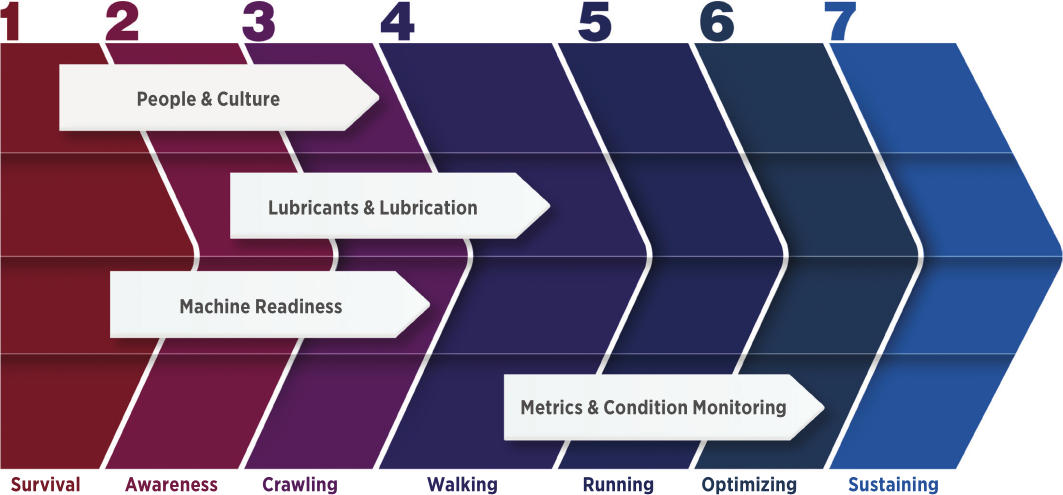The Seven Levels to Lubrication Excellence

Rome was not built in a day. Transformational change takes time. You’ve heard the expression, “once begun, you’re halfway done.”
But what are the milestones along the way? In other words, what are the stages or levels of transformation on the pathway to excellence? How can they be described in the most basic terms? That’s the subject of my column today.
The seven levels are in sequential order. Some organizations may elect to skip or leapfrog over two or more levels. Others may realize the virtue of getting a few small wins first before moving on to higher levels. There could be dangers or pitfalls in moving too fast.
Slow and steady wins the race. Moving rapidly through the levels may be more achievable if you are counselled by an experienced person or team who has step-staged through these levels before.
Defining Seven Levels of Excellence
The one-word descriptive titles of each level are listed to the right. The chart that follows provides a more detailed explanation of the meaning of these words. You can read through these descriptions to approximate the level your plant and team are at today. Better yet, have an independent auditor give you an unbiased assessment.
- Survival
- Awareness
- Crawling
- Walking
- Running
- Optimizing
- Sustaining


In order to move organizationally through the levels, there is a need to focus the transformation efforts more tactically. This is the trenchwork that solidifies the state of activity or performance at each level.
I’ve grouped this trenchwork into the following four tactical activities:
- People and Culture
- Lubricants and Lubrication
- Machine Readiness
- Metrics and Condition Monitoring
These tactical activities can be described in progression across each of the seven levels too. For any given plant, the movement of the tactical activities don’t usually stay in lockstep with each other. One tactical activity might be more advanced than the other three. Likewise, tactical change can be stretched across more than one level at any point in time.
Bird’s Eye View

An overview of how this might look is graphically illustrated above. As shown, People and Culture are at various substages between Level 1 and 3. In contrast, the tactical activities of Metrics and Condition Monitoring are well into the "Optimizing" stage of level 6 and nearly at level 7. The tactical progress of Lubricants and Lubrication is stretched between Levels 2 and 4 while Machine Readiness is lagging at the Crawl stage of Level 3. Programmatically, progress can be represented visually as the weighted average of the four tactical activities.
ICML 55.1 Alignment
There are 12 primary subjects within the standard ICML 55.1 (Optimized Lubrication of Mechanical Physical Assets). These 12 subjects are cross-referenced to the four tactical activities. Any organization meeting the requirements detailed in ICML 55.1 should, by default, be at least Level 5 if not higher. Later this year, the companion standard ICML 55.2 will be published providing functional detail on how to achieve compliance with each of the requirements in 55.1.
